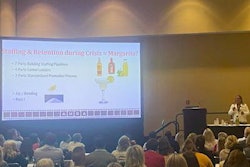
The rate of diagnostic imaging interpretation by nonphysician practitioners (NPPs) is rising and has become a concern among policy experts, according to a study published in Current Problems in Diagnostic Radiology.
A group led by biostatistician Casey Pelzl, of the Harvey L. Neiman Health Policy Institute in Reston, VA, found that the rate of NPP-billed imaging increased by 27% from 2016 to 2020, with the highest rates of interpretations occurring in rural and small-town areas.
"Given how broadly NPPs acknowledge deficiencies in imaging training, the observed extent of NPP imaging interpretation in contemporaneous clinical practice, particularly for advanced imaging, is concerning," the group wrote in an article posted on July 5.
Rural hospitals have substantial challenges recruiting and retaining physicians, including radiologists, the authors noted. NPPs appear to be filling these care gaps, yet there is concern about their training and the accuracy of their imaging interpretation, they wrote.
"Understanding these trends is the first step toward assessing discrepancies in access and quality of radiological care from NPPs versus physicians," the researchers wrote.
To that end, the group assessed over 110 million noninvasive imaging claims from Optum's Clinformatics Data Mart from 2016 to 2020 and identified more than 3.3 million (3%) that could be attributed to NPPs.
According to the analysis, the highest share of diagnostic imaging interpreted by NPPs occurred in 2020 (3.3%), up from 2.6% in 2016, which represents a 26.9% increase. While patients in metropolitan and micropolitan areas both saw significant increases in NPP-interpreted imaging (+31% and +19%), rates of NPP-interpreted imaging per 10,000 studies in rural and small-town areas were consistently higher when compared to metropolitan areas, the group found.
Also, the researchers noted that states with the least restrictive NPP practice authority had a higher rate of NPP imaging (3.7%) compared with states with moderately restrictive (3.4%) or the most restrictive (1.6%) NPP practice authority, the researchers found.
"Growth in recent years appears driven by metropolitan areas in states with less restrictive [scope-of-practice] regulations," the group wrote.
In addition, while NPP imaging interpretations appear somewhat focused, with radiography/fluoroscopy (53%) and ultrasound (24%) accounting for most cases, CT and MRI interpretations accounted for 21% of overall NPP-interpreted imaging, the group noted.
"The extent to which NPPs interpreted more advanced imaging modalities, however, was particularly striking," the authors wrote.
Ultimately, although some research has shown that NPPs can increase access and decrease costs in the primary care setting, their value in providing highly specialized services such as image interpretation is unknown, the researchers wrote.
"Future work is necessary to assess the quality of and downstream costs related to increasing NPP-interpreted imaging," they concluded.
Click here to read the full story.




















